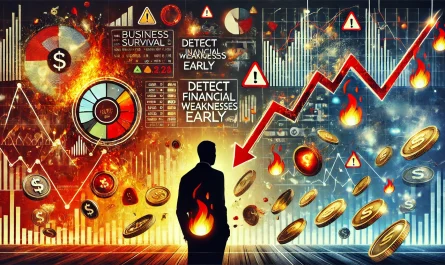Table of Contents
- 1 Why Is Customer Retention Important for Long-Term Business Growth?
- 2 The Loyalty Lock Framework: Effective Customer Retention Strategies That Work
- 3 Strategy (1) – Exclusive Benefits: Create Customer Privilege & FOMO to Retain Customers
- 4 Strategy (2) – Build Customer Loyalty Through Emotional & Community Connection
- 5 Strategy (3) – Improve Customer Retention with Personalization & Engagement
- 6 Strategy (4) – Increase Customer Retention by Making Switching Costs Higher
- 7 Strategy (5) – Gamified Customer Loyalty Programs That Encourage Habit-Driven Engagement
- 8 Strategy (6) – Customer Success Programs: How Support Boost Customer Retention Rates
- 9 Strategy (7) – Proactive Feedback & Issue Resolution: Addressing Problems Before Customers Leave
- 10 Strategy (8) – Surprise & Delight: The Small Gestures That Make Customers Engaged
- 11 How to Implement a Effective Customer Retention Program That Works
- 12 Key Customer Retention Metrics to Track Success
- 13 Final Thoughts: Why the Best Customer Retention Strategies Drive Sustainable Growth
- 14 The Bottom Line: Retention = Profitability
- 15 Next Level
Why Is Customer Retention Important for Long-Term Business Growth?
Implementing customer retention strategies is essential for businesses aiming for long-term success. Instead of focusing solely on acquiring new customers, companies must develop effective customer retention strategies to build strong relationships, enhance customer loyalty, and maximize profitability. By prioritizing these retention strategies, businesses can reduce churn, retain valuable customers, and create a loyal customer base that continues to engage and drive sustainable growth.
📌 Key Customer Retention Metrics:
✔ Acquiring a new customer costs 5X more than retaining an existing customer.
✔ A 5% increase in customer retention can boost profits by 25-95% according to studies
✔ Loyal customers spend 67% more than new customers.
🔹 Why Focus on Customer Retention Strategies Instead of Discounts?
Many businesses immediately turn to discounts when trying to retain customers, but this is a short-term fix that can hurt profitability:
❌ Discounts reduce profit margins, lowering the customer lifetime value (CLV).
❌ Customers become trained to expect lower prices, making them less likely to become loyal customers.
❌ Price-sensitive customers churn quickly when a competitor offers a better deal.
Instead of focusing on discounts, businesses should implement proven customer retention strategies that work to increase customer loyalty, enhance customer experience, and build long-term customer relationships.
The Loyalty Lock Framework: Effective Customer Retention Strategies That Work
Effective customer retention strategies focus on value, engagement, and long-term relationships. Businesses must make customers feel valued, encourage customer engagement, and reduce customer churn by ensuring an exceptional customer experience.
🔹 Effective Customer Retention Strategies:
| Retention Strategy | How It Helps Retain Customers | How to Implement It | Customer Retention Examples |
|---|---|---|---|
| 🎟 Exclusive Benefits & VIP Perks | Creates privilege and exclusivity so customers fear missing out | VIP memberships, priority access, enhanced customer service | Amazon Prime retains customers with exclusive perks. |
| ❤️ Emotional & Community Connection | Strengthens customer relationships, increasing loyalty program engagement | Exclusive customer groups, storytelling, brand engagement | Harley-Davidson’s riders club fosters strong customer loyalty. |
| 🎯 Personalized Customer Engagement | Improves customer retention rate by making customers feel valued | AI-driven recommendations, personalized customer service, loyalty rewards | Spotify enhances customer experience with personalized playlists. |
| 🔐 Increased Switching Costs | Makes customer churn difficult by offering integrated services | Subscription-based models, bundled products and services, long-term incentives | Apple’s ecosystem locks customers in with seamless integration. |
| 🎮 Gamified Loyalty Programs | Encourages repeat customer behavior and customer engagement | Loyalty program tiers, milestone rewards, surprise bonuses | Starbucks Rewards increases customer lifetime value with gamification. |
| 🏆 Customer Success & Onboarding | Ensures new customers understand and utilize the product or service fully | Personalized onboarding, proactive customer support, engagement tracking | Salesforce reduces churn by assigning customer success managers. |
| ✍️ Proactive Customer Feedback & Issue Resolution | Prevents customer churn by addressing problems early | Customer surveys, real-time feedback, and proactive solutions | Zappos resolves customer issues before they escalate. |
| 🤝 Surprise & Delight Moments | Creates positive emotional triggers to keep customers engaged | Unexpected freebies, personalized thank-you notes, surprise gifts | Chewy sends handwritten notes to pet owners. |
Now, let’s deep dive into these proven customer retention strategies and how to implement them effectively.
Strategy (1) – Exclusive Benefits: Create Customer Privilege & FOMO to Retain Customers
🔹 Why This Strategy Helps Retain Customers
Humans have an innate fear of missing out (FOMO). When customers feel privileged or receive unique benefits, they are less likely to switch to competitors.
📌 Customer Retention Example:
Amazon Prime keeps 200M+ subscribers worldwide engaged—not because of discounts, but because of:
✅ Exclusive access to deals that non-members can’t get.
✅ Fast, free shipping, making alternative services less appealing.
✅ Prime Video & Music, keeping customers engaged with multiple services.
📌 How to Implement Exclusive Benefits to Improve Customer Retention
Step 1: Offer a VIP Membership or Tiered Loyalty Program
 💡 How It Works:
💡 How It Works:
Offer special perks to loyal customers that they can’t get elsewhere, encouraging them to remain engaged with your brand.
✔ Example:
A high-end beauty salon created a Gold & Platinum membership where:
✅ Gold members receive priority booking and exclusive new treatments.
✅ Platinum members get quarterly skincare consultations and VIP events.
🚀 Result:
Customers stayed engaged and loyal because leaving meant losing exclusive access.
📌 Common Mistakes to Avoid:
❌ If every customer gets “VIP” access, it’s not exclusive.
❌ Not marketing the VIP benefits clearly—customers must see the value of staying.
Step 2: Use Priority Access & Service Upgrades as a Retention Tool
💡 How It Works:
Making customers feel important and giving them priority service can significantly improve customer retention.
✔ Example:
A local coffee shop launched a “Priority Club” where members:
✅ Got served first during peak hours.
✅ Could reserve a table in advance.
✅ Received access to limited-edition coffee blends.
🚀 Result:
Instead of switching to a cheaper competitor, customers stayed for the exclusive perks.
📌 Common Mistakes to Avoid:
❌ If every customer gets priority access, it loses its impact.
Step 3: Create a “Loyalty Ladder” with Milestone-Based Perks
💡 How It Works:
Customers earn progressive rewards over time, increasing their emotional investment in the brand.
✔ Example:
A local gym implemented a Loyalty Ladder to retain customers longer:
✅ 3 months: Free gym towel & welcome gift.
✅ 6 months: Personalized workout plan & priority reservations.
✅ 12 months: Free 1-on-1 training session.
🚀 Result:
Customers remained loyal longer to unlock higher-value perks.
📌 Common Mistakes to Avoid:
❌ Giving too many rewards too soon, reducing long-term engagement.
❌ Not communicating the loyalty structure—customers must know what they’re working towards.
Strategy (2) – Build Customer Loyalty Through Emotional & Community Connection
 🔹 Why This Strategy Helps Retain Customers
🔹 Why This Strategy Helps Retain Customers
Customers are more likely to stay loyal when they feel emotionally connected to a brand. A strong customer relationship leads to repeat customers, higher customer satisfaction, and improved customer retention rates.
📌 Customer Retention Example:
Harley-Davidson’s Harley Owners Group (HOG) turns one-time buyers into lifelong brand ambassadors by:
✅ Creating rider communities, increasing customer engagement.
✅ Organizing exclusive customer events, reinforcing brand loyalty.
✅ Offering priority access to limited-edition products, making customers feel valued.
📌 How to Build an Engaged Customer Community to Improve Customer Retention
Step 1: Create Insider Groups for Loyal Customers
 💡 How It Works:
💡 How It Works:
Exclusive customer loyalty programs and groups build a strong customer community, making customers feel personally connected to the brand.
✔ Example:
A small yoga studio launched an exclusive WhatsApp group for premium members where they:
✅ Received early access to new classes & workshops.
✅ Got exclusive health & wellness content tailored to their needs.
✅ Connected with instructors and other members, strengthening customer relationships.
🚀 Result:
Even when a competitor opened nearby, 80% of customers remained loyal because they valued the community connection.
📌 Common Mistakes to Avoid:
❌ Not actively engaging the group—a dead group loses its value.
❌ Making it too sales-driven—customers want connection, not constant promotions.
Step 2: Use Brand Storytelling & Cause-Driven Marketing Strategies
💡 How It Works:
People stay loyal to brands that align with their values and beliefs. Customers today expect businesses to stand for something bigger than just making money.
✔ Example:
Patagonia retains customers by prioritizing sustainability and environmental activism:
✅ Encouraging customers to repair old gear instead of buying new ones.
✅ Donating 1% of revenue to environmental causes, reinforcing its brand mission.
✅ Promoting customer stories that highlight outdoor adventure & conservation.
🚀 Result:
Customers support Patagonia not just for its products but because they believe in its mission.
📌 Common Mistakes to Avoid:
❌ Inauthentic messaging—customers can spot fake activism instantly.
❌ Not reinforcing brand values in every customer interaction.
Step 3: Organize Events & Customer Participation Initiatives
 💡 How It Works:
💡 How It Works:
Customers who actively engage with a brand beyond purchases develop long-term loyalty.
✔ Example:
Nike strengthens customer loyalty through community-driven fitness events:
✅ Local running clubs for Nike+ members.
✅ Virtual challenges via the Nike Run Club app.
✅ Leaderboard rankings that gamify customer engagement.
🚀 Result:
Nike turned a product-based brand into an engaging lifestyle experience, improving customer retention rates.
📌 Common Mistakes to Avoid:
❌ Hosting events that don’t align with customer interests.
❌ Making participation too exclusive, limiting engagement opportunities.
Strategy (3) – Improve Customer Retention with Personalization & Engagement
 🔹 Why This Strategy Helps Retain Customers
🔹 Why This Strategy Helps Retain Customers
Customers want to feel valued and expect personalized experiences that cater to their specific needs. A personalized customer journey leads to higher retention rates, stronger customer relationships, and increased customer lifetime value.
📌 Customer Retention Example:
Spotify ensures repeat customer engagement by:
✅ Using AI to generate personalized playlists based on user preferences.
✅ Sending customized recommendations to enhance customer experience.
✅ Offering exclusive access to early music releases, keeping customers engaged.
📌 How to Implement Personalization in Your Retention Strategy
Step 1: Use Customer Data to Create Personalized Offers
💡 How It Works:
Businesses can use customer data to tailor recommendations and special offers, making customers feel valued and encouraging repeat purchases.
✔ Example:
A small bookstore improved its customer retention rate by:
✅ Sending personalized book recommendations based on previous purchases.
✅ Offering birthday discounts on customers’ favorite genres.
✅ Inviting loyal customers to exclusive author meet-and-greet events.
🚀 Result:
Customers were 35% more likely to return because they felt personally valued.
📌 Common Mistakes to Avoid:
❌ Overloading customers with irrelevant offers—personalization should be accurate and meaningful.
❌ Failing to use customer data effectively—businesses should analyze past interactions and preferences.
Step 2: Segment Customers for More Targeted Engagement
💡 How It Works:
Not all customers value the same perks. Businesses should segment customers by purchase behavior, spending habits, and engagement levels to provide more relevant offers.
✔ Example:
A fashion boutique segmented customers into:
✅ Frequent Buyers: Received early access to seasonal collections.
✅ High-Spending Customers: Got one-on-one styling consultations.
✅ Occasional Shoppers: Received reminders & trend updates based on their style.
🚀 Result:
Customers received personalized perks, leading to a 45% increase in retention rates.
📌 Common Mistakes to Avoid:
❌ Sending the same message to all customers—personalization should be highly targeted.
❌ Making the program too complex—keep segmentation simple and clear.
Strategy (4) – Increase Customer Retention by Making Switching Costs Higher
🔹 Why This Strategy Helps Retain Customers
The harder it is for customers to switch to a competitor, the more likely they are to stay loyal. Businesses can create high switching costs by making their products and services deeply integrated into customers’ daily lives.
📌 Customer Retention Example:
Apple keeps its customer base loyal by:
✅ Creating a seamless ecosystem between iPhone, Mac, iPad, and Apple Watch.
✅ Locking users into iCloud storage and iMessage, making switching inconvenient.
✅ Providing a customer loyalty program through trade-in offers and exclusive services.
📌 How to Increase Switching Costs to Improve Customer Retention
Step 1: Offer Subscription-Based or Bundled Services
💡 How It Works:
Subscription models create long-term customer engagement and increase customer lifetime value by making customers dependent on your product or service.
✔ Example:
A B2B logistics company reduced customer churn by:
✅ Offering tiered subscription models with increasing benefits.
✅ Providing integrated tracking software that required long-term use.
✅ Locking in long-term contracts with gradual cost incentives.
🚀 Result:
95% of clients renewed their contracts because switching would require overhauling their entire supply chain.
📌 Common Mistakes to Avoid:
❌ Forcing customers into long-term contracts with no flexibility—this creates frustration rather than loyalty.
❌ Not providing enough incentives—subscriptions should provide ongoing value to keep customers engaged.
Step 2: Make Loyalty Points & Perks Accumulate Over Time
💡 How It Works:
When customers accumulate exclusive perks over time, they feel they have something to lose by leaving.
✔ Example:
Sephora’s Beauty Insider Program increased repeat customers by:
✅ Offering tiered loyalty rewards that increased with more purchases.
✅ Unlocking VIP perks like free beauty classes at higher spending levels.
✅ Encouraging customers to track their progress toward bigger rewards.
🚀 Result:
Customers stayed engaged to avoid losing their accumulated points and exclusive rewards.
📌 Common Mistakes to Avoid:
❌ Resetting loyalty points too frequently, frustrating customers.
❌ Offering rewards that aren’t valuable enough to encourage long-term retention.
Strategy (5) – Gamified Customer Loyalty Programs That Encourage Habit-Driven Engagement
 🔹 Why This Strategy Helps Retain Customers
🔹 Why This Strategy Helps Retain Customers
Gamification taps into psychology-driven rewards, making customer interactions more engaging. It increases customer retention rates by creating habit loops that encourage ongoing participation.
📌 Customer Retention Example:
Starbucks Rewards increases repeat customer visits by:
✅ Allowing customers to earn stars for every purchase.
✅ Unlocking free drinks & discounts after reaching milestones.
✅ Providing bonus star promotions for engaging more frequently.
📌 How to Implement Gamified Loyalty Programs to Keep Customers Engaged
Step 1: Create a Progress & Milestone-Based Reward System
💡 How It Works:
A tiered reward system motivates customers to keep interacting with your brand.
✔ Example:
A local fitness studio improved customer retention rates by:
✅ Awarding points for attending classes and completing fitness challenges.
✅ Offering free personal training sessions after 10 visits.
✅ Using leaderboards to encourage friendly competition.
🚀 Result:
Customer engagement increased by 42%, as members were motivated to reach their next milestone.
📌 Common Mistakes to Avoid:
❌ Making progress too slow—customers should see tangible rewards quickly to stay motivated.
❌ Not integrating rewards into the customer journey—loyalty programs should be seamlessly tied to regular interactions.
Step 2: Introduce Surprise Rewards & Psychological Triggers
💡 How It Works:
Customers love surprises—unexpected rewards increase dopamine levels, leading to higher brand attachment.
✔ Example:
A tea shop retained repeat customers by:
✅ Offering a mystery reward after every 10 purchases.
✅ Giving surprise birthday gifts to loyal customers.
✅ Sending handwritten thank-you notes, reinforcing emotional connection.
🚀 Result:
38% of customers returned more frequently, hoping to unlock the next mystery reward.
📌 Common Mistakes to Avoid:
❌ If customers always know the reward, it loses its excitement.
Strategy (6) – Customer Success Programs: How Support Boost Customer Retention Rates
 🔹 Why This Strategy Helps Retain Customers
🔹 Why This Strategy Helps Retain Customers
Customers don’t just need a product or service—they need to know how to get the most value from it. A strong customer success program ensures that customers fully utilize your offerings, making them less likely to switch to competitors.
📌 Customer Retention Example:
Salesforce reduced customer churn by 32% by:
✅ Assigning dedicated Customer Success Managers (CSMs) to high-value clients.
✅ Offering personalized onboarding for new customers.
✅ Monitoring customer data to detect inactivity and proactively reaching out before issues arise.
📌 How to Implement a Customer Success Program to Retain Customers
Step 1: Provide a Structured Onboarding Process for New Customers
💡 How It Works:
A well-structured customer onboarding program ensures new customers fully understand how to use your product or service from day one.
✔ Example:
A marketing software company increased its customer retention rate by:
✅ Sending step-by-step email guides to help customers get started.
✅ Offering live onboarding webinars for first-time users.
✅ Assigning a dedicated support specialist for premium customers.
🚀 Result:
Customers who completed onboarding were 60% less likely to churn than those who didn’t.
📌 Common Mistakes to Avoid:
❌ Providing too much information at once, overwhelming the customer.
❌ Assuming customers will figure things out on their own—most won’t.
Step 2: Proactively Check In & Offer Help Before Customers Complain
💡 How It Works:
Instead of waiting for customer complaints, businesses should proactively reach out and ask if customers need help.
✔ Example:
A subscription-based online learning platform reduced customer churn by:
✅ Monitoring customer engagement data to detect inactivity.
✅ Sending automated “We noticed you haven’t logged in” emails.
✅ Offering personalized course recommendations to re-engage inactive users.
🚀 Result:
Customers who received proactive check-ins were 40% more likely to remain subscribed.
📌 Common Mistakes to Avoid:
❌ Only contacting customers when they complain—by then, it may be too late.
❌ Sending generic, automated messages—make it personalized and relevant.
Step 3: Create a Knowledge Base for Self-Service Support
💡 How It Works:
Many loyal customers prefer to solve problems themselves rather than contacting customer support.
✔ Example:
A web hosting company reduced customer complaints by 50% by:
✅ Creating a searchable help center with step-by-step guides.
✅ Offering short tutorial videos for common issues.
✅ Implementing a chatbot that suggests relevant help articles before escalating to a human agent.
🚀 Result:
Customers solved problems quickly and independently, leading to higher customer satisfaction.
📌 Common Mistakes to Avoid:
❌ Making the knowledge base difficult to navigate—ensure simple search functionality.
❌ Not updating help resources regularly, leading to outdated information.
Strategy (7) – Proactive Feedback & Issue Resolution: Addressing Problems Before Customers Leave
 🔹 Why This Strategy Helps Retain Customers
🔹 Why This Strategy Helps Retain Customers
Customer retention is not just about rewards—it’s about ensuring that customers don’t experience frustrations that make them want to leave.
📌 Customer Retention Example:
Zappos built a strong customer loyalty program by resolving customer complaints proactively:
✅ Monitoring customer feedback in real time.
✅ Offering free overnight shipping upgrades to customers who experienced delays.
✅ Empowering employees to resolve customer issues immediately.
📌 How to Use Customer Feedback to Improve Customer Retention
Step 1: Conduct Regular Customer Satisfaction Surveys
💡 How It Works:
Collecting customer feedback helps businesses spot early signs of dissatisfaction before customers leave.
✔ Example:
A hotel chain improved its customer experience by:
✅ Sending post-stay surveys to guests.
✅ Implementing real-time feedback alerts so hotel staff could address issues before checkout.
✅ Offering discount vouchers to unhappy customers as a goodwill gesture.
🚀 Result:
Negative online reviews dropped by 60%, and repeat customer visits increased.
📌 Common Mistakes to Avoid:
❌ Not taking action on feedback—customers won’t bother responding if they don’t see improvements.
Step 2: Assign a Customer Retention Team to Handle Complaints
💡 How It Works:
A dedicated customer retention team can resolve customer issues before they escalate into cancellations.
✔ Example:
A telecommunications company retained 30% of at-risk customers by:
✅ Creating a special retention department to handle cancellation requests.
✅ Offering tailored retention incentives based on each customer’s reason for leaving.
✅ Allowing frustrated customers to escalate their issues quickly to senior representatives.
🚀 Result:
Customer complaints were resolved faster, increasing customer retention rates.
📌 Common Mistakes to Avoid:
❌ Using pushy sales tactics instead of genuinely solving the customer’s problem.
Strategy (8) – Surprise & Delight: The Small Gestures That Make Customers Engaged
 🔹 Why This Strategy Helps Retain Customers
🔹 Why This Strategy Helps Retain Customers
Sometimes, the smallest unexpected gestures have the biggest impact on customer loyalty.
📌 Customer Retention Example:
Chewy.com built exceptional customer relationships by:
✅ Sending handwritten thank-you notes to customers.
✅ Sending flowers to customers who lost their pets.
✅ Offering random free product upgrades as a surprise bonus.
📌 How to Implement a Surprise & Delight Strategy to Keep Your Customers Engaged
Automate Surprise Rewards for Long-Term Customers
💡 How It Works:
Offering unexpected rewards can strengthen customer relationships and increase customer engagement.
✔ Example:
A local coffee shop improved customer retention rates by:
✅ Sending a free drink coupon to customers on their birthday.
✅ Upgrading loyal customers to premium coffee blends for free.
✅ Offering mystery gifts after every 20 purchases.
🚀 Result:
Customers were 50% more likely to return after receiving surprise perks.
📌 Common Mistakes to Avoid:
❌ Making the reward too predictable—the key is the element of surprise.
How to Implement a Effective Customer Retention Program That Works
Now that we have explored the eight most effective customer retention strategies, it is time to put them into action. A structured retention strategy ensures that your business retains more customers, boosts customer lifetime value, and reduces customer churn.
Step-by-Step Effective Customer Retention Plan
| Step | Action | Timeframe |
|---|---|---|
| 1. Identify At-Risk Customers | Use customer data to analyze churn risks and customer behavior. | 1-2 weeks |
| 2. Implement Exclusive Perks & VIP Benefits | Launch a customer loyalty program that rewards existing customers. | 2-4 weeks |
| 3. Strengthen Emotional Connection & Community Engagement | Build a customer base by creating brand advocates and insider groups. | 1 month |
| 4. Increase Switching Costs & Personalization | Offer subscription models, personalized perks, and bundled products and services. | 3 months |
| 5. Develop a Customer Success Program | Ensure new customers receive structured onboarding, proactive customer support, and regular follow-ups. | 1-3 months |
| 6. Create a Gamified Loyalty Program | Introduce milestone rewards, progress tracking, and personalized customer engagement. | 2-4 months |
| 7. Set Up a Customer Feedback Loop | Collect customer surveys, analyze retention metrics, and address customer complaints proactively. | Ongoing |
| 8. Deliver Surprise & Delight Moments | Offer unexpected rewards, personalized thank-you notes, and customized appreciation gifts. | Ongoing |
🚀 Final Takeaway: Businesses that implement these proven customer retention strategies will see higher retention rates, improved customer satisfaction, and stronger brand loyalty.
Key Customer Retention Metrics to Track Success
📌 How do you measure the effectiveness of your customer retention strategies?
Tracking customer retention metrics allows businesses to refine their retention strategies and ensure that efforts lead to higher engagement and long-term loyalty.
| Metric | What It Measures | Target Goal |
|---|---|---|
| Customer Retention Rate (%) | The percentage of customers who stay over a given period. | Aim for 80%+ retention. |
| Customer Lifetime Value (CLV) | The total revenue a customer generates over time. | Aim for 2-3x Customer Acquisition Cost (CAC). |
| Repeat Purchase Rate (%) | The percentage of customers who make multiple purchases. | Aim for a 30%+ increase over time. |
| Loyalty Program Engagement (%) | The percentage of customers actively participating in loyalty initiatives. | Aim for consistent participation growth. |
| Customer Satisfaction Score (CSAT) | Measures customer satisfaction and loyalty. | Target 85%+ satisfaction. |
| Net Promoter Score (NPS) | Measures how likely customers are to recommend your business. | Target 50+ (industry-dependent). |
| Customer Churn Rate (%) | The percentage of customers lost over a given period. | Aim for less than 5% churn. |
🚀 Final Takeaway: By monitoring these customer retention metrics, businesses can ensure customer satisfaction, reduce churn, and improve long-term profitability.
Final Thoughts: Why the Best Customer Retention Strategies Drive Sustainable Growth
Most businesses focus too much on customer acquisition while neglecting the importance of retaining customers. However, improving customer retention is the key to sustainable revenue growth, stronger brand loyalty, and higher profit margins.
Key Reasons Why Customer Retention is Important
📌 Acquiring a new customer costs 5X more than keeping an existing customer.
📌 Loyal customers spend 67% more than new customers.
📌 Boosting customer retention by just 5% can increase profits by 25-95%.
📌 Customer loyalty programs and effective retention strategies lead to repeat customers and referrals.
Instead of offering price-based incentives, businesses should focus on:
✔ Providing personalized customer experiences.
✔ Building emotional connections with their customer base.
✔ Increasing switching costs with subscriptions and bundled services.
✔ Enhancing customer success and proactive customer support.
✔ Using customer retention strategies that work to engage and retain customers long-term.
💡 What Makes the Best Customer Retention Strategies Work?
✔ Customers stay not because they have to, but because they want to.
✔ Businesses prioritize customer satisfaction and loyalty.
✔ Strong customer relationships lead to sustainable, long-term profitability.
The Bottom Line: Retention = Profitability
Businesses that focus on customer retention will experience:
📌 Higher customer lifetime value (CLV) – customers spend more over time.
📌 Lower churn rates – fewer lost customers mean higher revenue stability.
📌 Increased word-of-mouth marketing – loyal customers become brand advocates.
📌 Sustainable growth – rather than relying on constant new customer acquisition.
💡 Your business will retain more customers if you:
✔ Provide VIP perks that competitors can’t match.
✔ Build a strong customer relationship and engagement strategy.
✔ Offer personalized customer support and experiences.
✔ Create high switching costs through long-term customer retention strategies.
✔ Gamify retention, making customer interactions rewarding and engaging.
🔥 By implementing these strategies, businesses can reduce customer churn, retain existing customers, and create lifelong brand advocates.
Next Level
Ready to take your business and career to the next level? Explore our expert blogs on management, business, recruitment, job search, credit control, and technology to gain valuable insights and strategies for success.
Looking to strengthen your strategic decision-making? Enroll in our Master SWOT Analysis and Business Strategy for Ongoing Success course today and learn how to leverage SWOT analysis for smarter business growth and career advancement.
👉 Start learning now: Master SWOT Analysis and Business Strategy Course
Stay ahead—read, learn, and grow with VF Empower! 🚀



